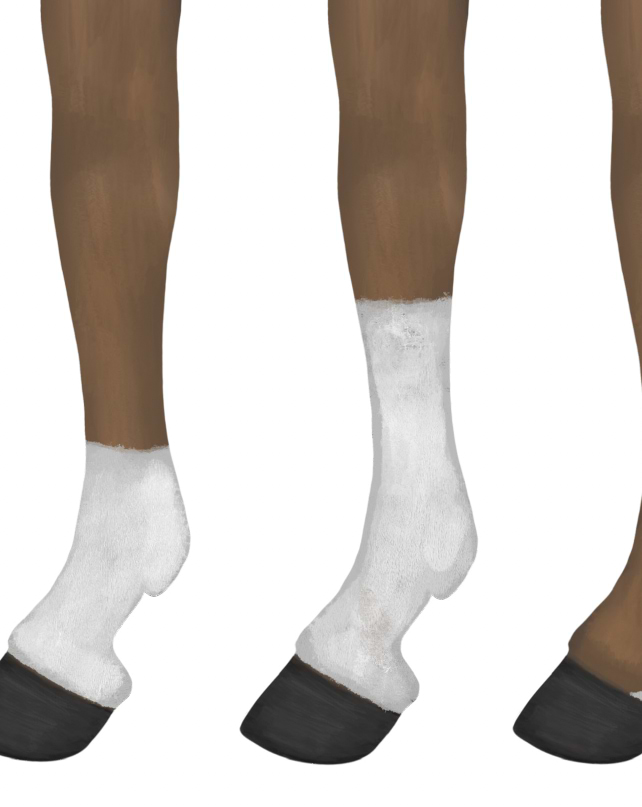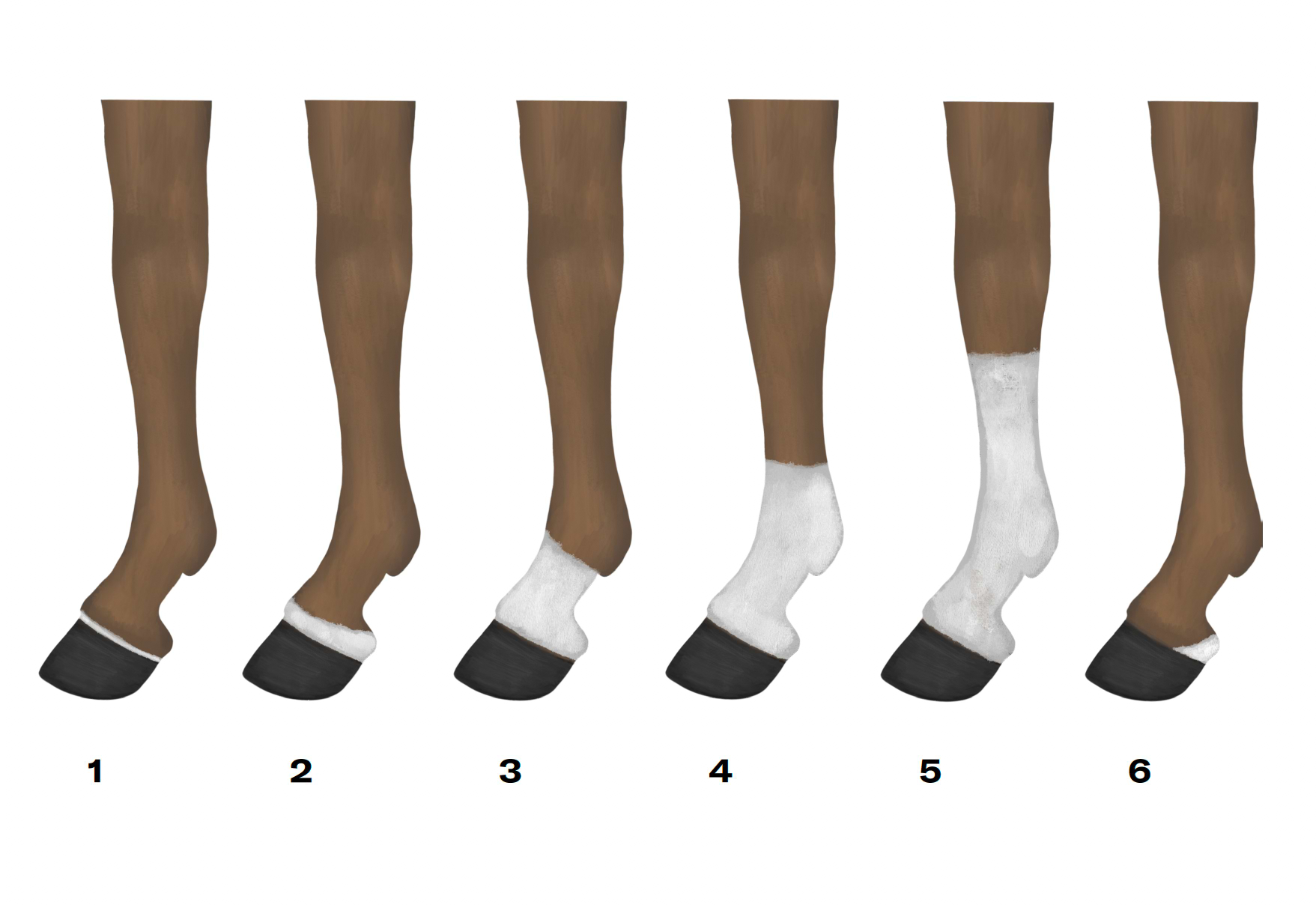Guide:
Horse Leg Markings
Our four-legged friends come in various appearances and with unique characteristics. In this guide, we focus on the white markings on their legs and their designations.
Greta
Wed 5 Jun - 24

Guide:
Horse Leg Markings
Our four-legged friends come in various appearances and with unique characteristics. In this guide, we focus on the white markings on their legs and their designations.
Greta
Wed 5 Jun - 24
Horses commonly have white markings on their coat. These markings can appear in various locations but are most frequently found on the head and legs. Together with the horse's name, gender, date of birth, height, and color, these white leg and head markings contribute to the horse's description. The extent of white fur on the legs varies; it may be present on all legs, only on the front or back ones, or on just a single leg.
Below, we outline some of the most prevalent markings found on horses' legs.
1. Coronet Band
White coat just above the hoof, around the coronary band and usually no more than 2.5 cm above the hoof.
2. Pastern
White marking that extends above the top of the hoof but stops below the fetlock.
3. Fetlock
White marking that extends over the fetlock, occasionally called a “boot”.
4. Sock
White marking that extends higher than the fetlock but not as high as the knee or hock.
5. Stocking
White marking that extends at least to the bottom of the knee or hock, sometimes higher.
6. Partial or Half Pastern
White marking which includes only half the pastern above the coronet.

💡 Clarification!
These are some of the common terms. Depending on where in the world you are, the terms for the different markings may vary. In terms of identification within the horse's passport or similar documents, a more detailed description than simply stating, for example, “stocking” or “sock” is often necessary.
Do you want to test your knowledge of horse leg markings? Download our illustration.